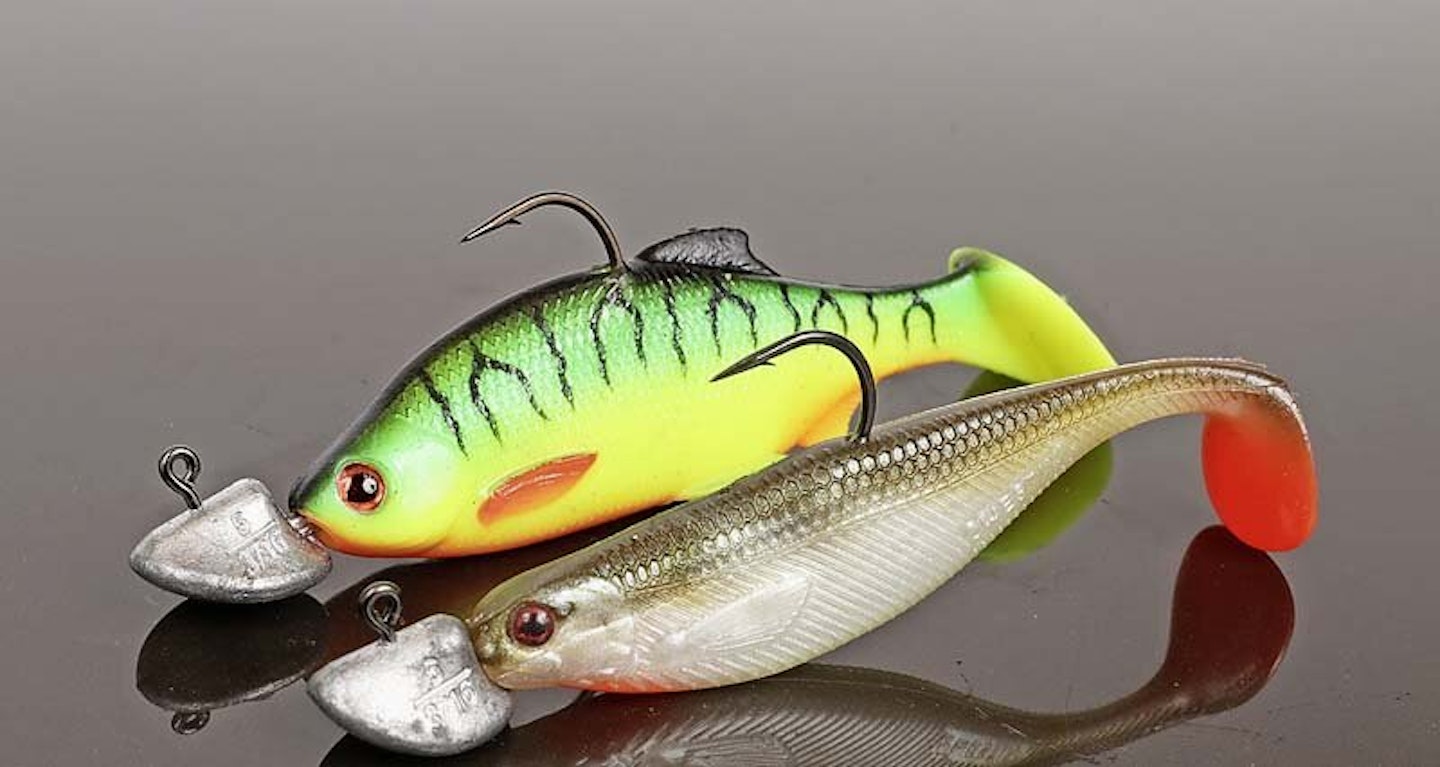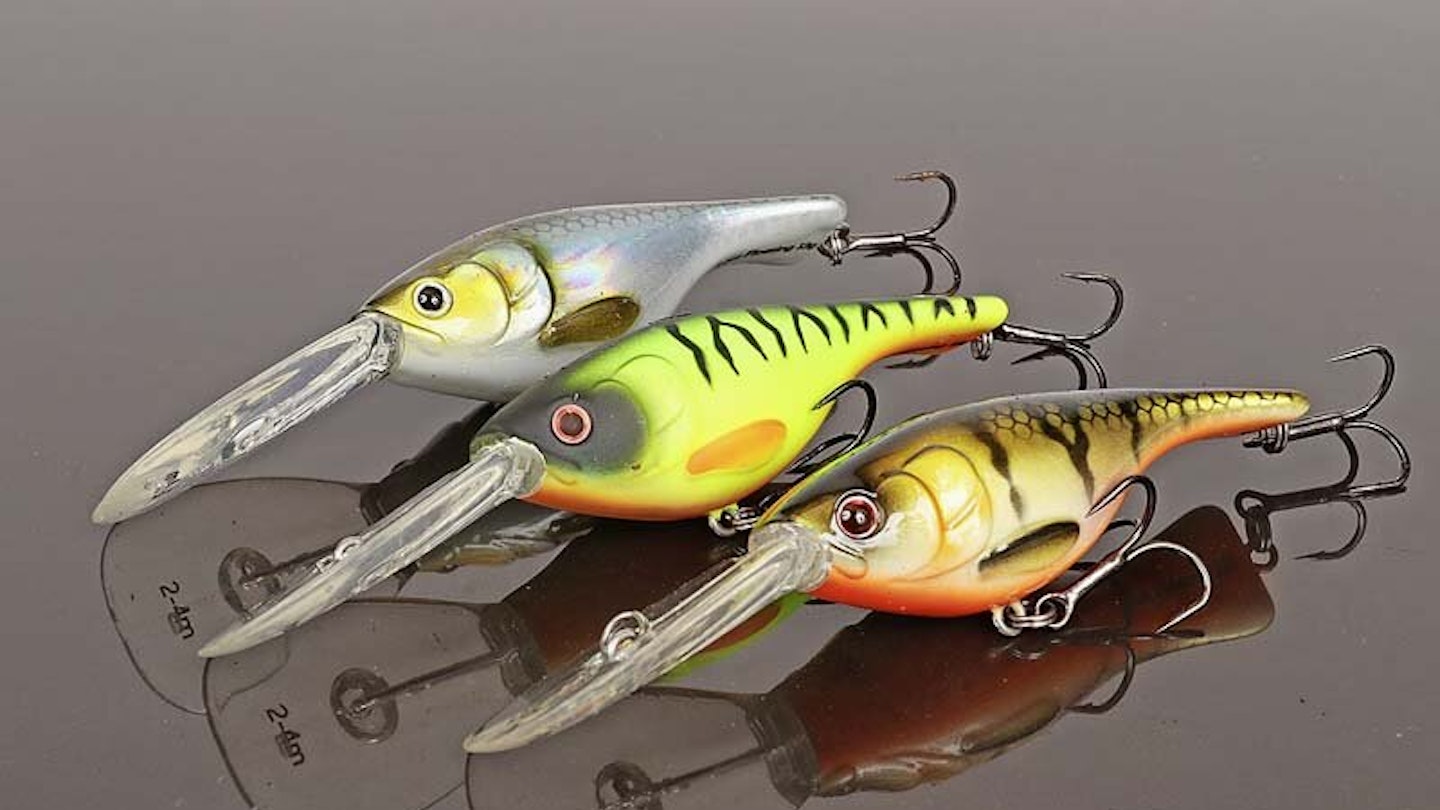There are loads of lures that will catch perch, but not all of them are effective all of the time. The key to success is knowing when to use each one to its best advantage. The rule of thumb that I work to is based upon water temperature. The warmer the water, the more positively you can fish with larger lures and faster retrieves. In the depths of winter, the opposite is true. Only the smallest movements are needed, and smaller lures tend to score better. So let’s take a look at some top picks for the months ahead.
WHAT COLOUR LURE TO USE
Over the years my thoughts on lure colours have changed a lot. They may differ from conventional wisdom but have been proved successful time and time again.
There is no right or wrong colour, so it’s worth having a few variations. Water temperature and clarity both play their part in deciding on the best colours.
Autumn clear water – I like bright colours at this time of the year. Slime Curd and Headlight are among my favourites.
Autumn murky water – The strong silhouette of a dark lure tends to be best under these conditions. Go for colours like Sangria and Motor oil.
Winter clear water – These are among the toughest conditions to catch in, but brighter colours still tend to win out. I like Official Roach and Bass Orange when the going gets tough.
Winter murky water – Once again, the strong silhouette of a darker lure tends to be my favourite, and Seaweed and Sweet Plum are stand-out patterns.
CRANKBAITS - BEST USED IN OCTOBER/NOVEMBER
These small hard lures are my favourite way to catch perch, and when the water is still relatively warm they take some beating.
Use lures in the 6cm-9cm range, as these are ideal for perch, and pay attention to the diving depth of the lure. The bigger the vane on the front of the lure, the deeper it will dive.
By far the best shape of crankbait for perch is a short, stumpy body that produces a really fast wiggle action. For some reason this drives perch crazy, and in clear water you can watch them pick up on the vibrations and zoom towards the lure from several metres away.
Perch are often still quite spread out at this time of the year and can take some finding. This is where crankbaits score, because they can be worked quickly through a swim.
Try fan-casting, covering the water in front of you in a series of casts from left to right. If you don’t have any hits straight away, move on to the next swim.
SHADS - BEST USED IN NOVEMBER/DECEMBER
With the water temperatures dropping away, the perch are often a little less active and will tend to hug the bottom more closely. This calls for a lure that can be fished a little slower and – crucially – closer to the bottom without snagging up. Soft shads are perfect for this job, especially when fished on a weedless rig.
Lure size is starting to become more important now. Try lures in the 4cm-9cm range, depending upon the size of perch that you are fishing for.
Rig these on a matching wide gape hook, ranging from a size 1/0 to a 3/0.
Instead of hooking the lure through the back, thread the hook on sideways for a simple weedless rigging. This will help you avoid the majority of snags, but still gives a clean hook-up when a perch bites down on the lure.

DROP SHOT - BEST USED IN DECEMBER/JANUARY
With the water temperature now falling quite low and still dropping, the perch are much less active and will often hug the bottom and any features tightly.
Gone are the days of expecting perch to chase lures – now a bait has to be presented right on their noses to bring a bite.
This is where drop-shotting really comes into its own, as the weight on the end of the line ensures that the bait is held right in front of the perch for the whole of the retrieve.
With the lure set at about 30cm off the bottom, it will be impossible for the fish to ignore it. Ever so slowly edge the lure along the bottom, leaving a good 10-second pause before moving it again. Very often bites will come when the bait is static.
Smaller lures prove their worth at this time of the year.
Small shads and worms measuring around 4cm-6cm are perfect, even when targeting specimen perch.

CREATURE BAITS - BEST USED IN JANUARY/FEBRUARY
With conditions now stable but cold, the perch will be amid cover and may only feed for short periods around dawn and dusk. Their natural prey of small fish and invertebrates will be harder to catch, though, so they will be hungry. Once again, a slow approach, close to cover and hard on the bottom, will pay dividends.
Texas rigging was developed for catching bass in heavy weed, but it works just as well for perch when the bait needs to be inched along the bottom. The ideal bait is a small rubber ‘creature’, which could be anything from a worm shape to a crayfish.
The ideal lure has a slim profile allowing it to be rigged weedless, so it can be worked along the bottom without snagging.
Go for 4cm-6cm lures rigged on a size 4/0 wide-gape hook, and expect bold bites as the perch grab these plastic creatures.

